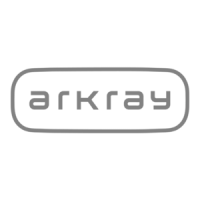Chapter 2 Measurement
HA-8190V 2-18
1 Prepare samples.
For whole blood sample (anemia and non-anemia):
a Prepare sample in a sample tube or sample cup.
• The volume of sample as shown on the right is required for
measurement.
b If using a sample tube, make sure the cap is on tight.
• If not capped, cap the tube with a resealable cap.
For hemolysis samples:
a Prepare 400 L or more of sample in a sample cup.
Min. 10 mm
above the
bottom
Sample cup
Min. 400 µL
Sample tube (with cap)
Min. 1 mL
Performing measurements with uncapped tubes
may cause sample to splatter inside the
instrument while spinning, possibly jeopardizing
subsequent measurements. It may also cause
infection to the user or other individuals by
pathogenic microbes.
NOTE:
Use rubber resealable caps recommended by the sample tube manufacturer. Other unrecommended caps
may damage the piercing nozzle during measurement operations.
IMPORTANT:
Prepare hemolysis samples so that the total area of the
measurement result is between 30,000 to 60,000 counts.
Inaccurate measurement results will be obtained if the
sample’s hemoglobin concentration is outside this range.
Use DILUENT90 to prepare hemolysis samples.
Inaccurate measurement results will be obtained if
samples are diluted with other diluents.
REFERENCE:
Hemolysis samples prepared in sample tubes cannot be measured in normal measurement. Use the STAT port to
measure hemolysis samples in sample tubes. See “2.6. STAT Measurement” on page 2-26.

